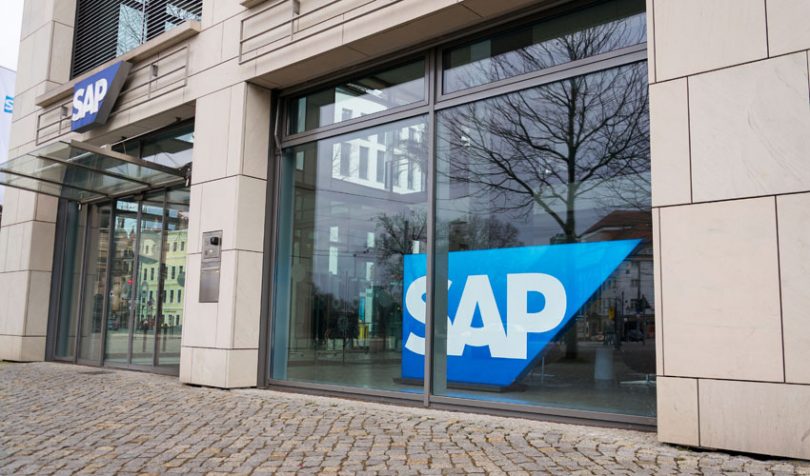If you consider that blockchains are the social networks for business, then a company with one of the strongest networks is SAP. Yet, compared to the leading blockchain player IBM, SAP’s blockchain approach is relatively low-key with just three public initiatives in pharmaceuticals, food provenance and technology. Talking to Gil Perez, SAP senior vice president of products and innovations, it became apparent that SAP’s blockchain strategy is different to its competitors in many ways, particularly in relation to forming a consortium, ownership and incentives.
A top-down approach
The challenge of blockchain for enterprises isn’t the technology. Rather, it’s ensuring there’s an appropriate business case and creating an effective consortium. Getting agreement between competitors can be painfully slow. The fewer companies involved, the faster the process. Hence, some have adopted a lighthouse strategy with one or two major industry players.
In a recent report, McKinsey also suggests this as a solution: “Leaders should act now to maintain their market positions and take advantage of the opportunity to set industry standards. As dominant players pursuing use cases with fewer requirements for coordination and regulatory approval, they can establish market solutions.”
For example, IBM has adopted this approach across multiple industries, with Maersk in shipping (TradeLens), CLS in financial services (LedgerConnect), and Deutsche Bahn in mobility.
TradeLens is an ambitious project that aims to digitalize paperwork for the fragmented global supply chain industry. The potential efficiency savings are enormous. IBM and Maersk have signed up more than 20 port and terminal operators, several global customs authorities, cargo owners and freight forwarders. But so far, outside the Maersk group, only one additional container carrier has joined. Just yesterday a platform was announced with five Maersk competitors participating.
When TradeLens formally launched three months ago, Ledger Insights observed that IBM and Maersk had moved away from a formal joint venture. At the time, we speculated that this could provide flexibility if there’s too much pushback from competitors (or regulators), making it easier for IBM to buy out Maersk.
“There’s a top-down and there is a bottom-up approach,” according to SAP’s Perez. “And in top-down we’d say, OK, we are going to create a network. Everybody should come and join.” i.e., the TradeLens model.
However, not everyone is on board. The world’s largest shipping freight forwarder, Kuehne + Nagel so far has chosen not to participate in TradeLens and instead is working with Accenture on an alternative blockchain shipping project. “One of the guiding principles is that ownership of the platform will not be restricted to the founding parties,” a Kuehne + Nagel spokesperson told Ledger Insights.
Bottom-up
SAP looks at it from the bottom-up. “We’ve taken a different approach since we’re open. We’re not focused on a single technology,” Perez said. For SAP’s pharmaceuticals industry project for saleable returns, for instance, “let’s work with the 15 or 20 top companies, which in essence represent 80% or 90% of the market,” he continued, “and try to get them to agree on what they want to share and how do they see this technology being embedded into their business?”
Hence when they make an announcement, as in the case of pharmaceuticals, SAP already have industry-wide adoption. “That’s the slower approach but the right one for this process, because you cannot accelerate resolving differences with people by just coming in and saying, OK, as a technology company, we know what’s best for you,” Perez said.
Who owns what
The top-down versus bottom-up approach often determines who owns the intellectual property and network. And as a result, who reaps the financial benefits of a permissioned blockchain. It potentially creates a lot of friction.
In SAP’s model, the ownership is looser with the consortium deciding only on the business case and process. In essence, the agreement is about what data will be shared, the taxonomy, the business process, and the governance. The governance includes when and how to update the software.
Together the group produces a unanimously agreed upon document which covers the agreed use case “standard”, not the technology. The intellectual property (IP) in the document is jointly owned, but that’s it. Each member of the consortium is then free to go off and implement the technology independently of SAP, according to Perez.
Nodes can be hosted on different clouds or on-premises but still talk to each other on the same network. The blockchain protocols are open source. That leaves SAP to offer what it’s always done: applications. Other providers can create competing solutions using the same data and process standard. And all the applications sit on top of the same blockchain network.
The solution seems elegant.
But there is a caveat. It’s still a permissioned network, so the consortium founders act as gatekeepers in deciding who can join the network. However, any member can invite someone to join so there is no veto by other members.
In terms of business models, the network does not aim to charge a percentage of transaction value like the cryptocurrency monetization model. Perez said “the members’ compensation is the additional business value blockchain adds to an existing business process. For ‘Farm to Consumer’ it’s addressing food recall more efficiently, for Pharma companies it is to comply to FDA regulations for prescription drugs sellable returns.”
That doesn’t make participation free, because there are costs in hosting a node and the software will have license fees. But the IP structure enables software competition. If in the future one software provider became dominant and tried to extract a monopolistic rent, theoretically the ownership structure allows for challengers. Unlike many other consortium models.
Lack of incentives
Many consortia now focus on what makes a good use case. Often, the decision is about the degree of cost efficiency or some other business benefit. But there’s not enough emphasis on incentives for all parties, Perez warned: “A lot of people are just saying: ‘Oh, we’ll deal with that later on’, and it should be the other way around. That entire business viability and the incentives across the entire chain in [public] blockchain cryptocurrency is built into the model.” The absence of a baked-in incentive is often underestimated, Perez said.
Take Bumble Bee Foods, as an example, he said. Bumble Bee is using blockchain for tuna provenance to show sustainable fishing. By demonstrating fair trade and responsible fishing, the fishermen get paid a higher price.
“But if, for example, Bumble Bee would come to their fisherman and say ‘Hey, I want you to do 10 more things today, but you’re not getting any kind of compensation for it,’ the fishermen would obviously not be interested in doing that,” Perez elaborated.
He also pointed out that there’s usually a combination of multiple incentives. In the tuna case, there’s also the benefits of doing faster and easier re-calls when needed.
“You need to really go across all of the different constituents and stakeholders to ensure that you have enough value and enough incentive for each one of them to participate,” Perez explained.
Conservative approach
A recently published SAP survey found that 99.5% of respondents (all in SAP’s network) view blockchain as an opportunity. But that figure concerns Perez because he believes such universal enthusiasm is partly driven by misunderstanding. The other worry is managing expectations. At that level of optimism, some degree of disappointment is inevitable.
“As Blockchain is at the peak of the ‘hype cycle’, SAP is constantly sharing with our customers SAP’s experience regarding the business value Blockchain can provide for their industry/network,” Perez said. “We are engaging hundreds of customers on Blockchain projects daily, yet prior to starting our engagement we ensure they have realistic and pragmatic expectations of the ROI. Not doing that would be setting our customers, SAP and the industry for disappointment.”
SAP’s realism amongst all the industry hype is refreshing. And their solution to “who owns what” could be one of the missing pieces to solving the blockchain consortium puzzle.







